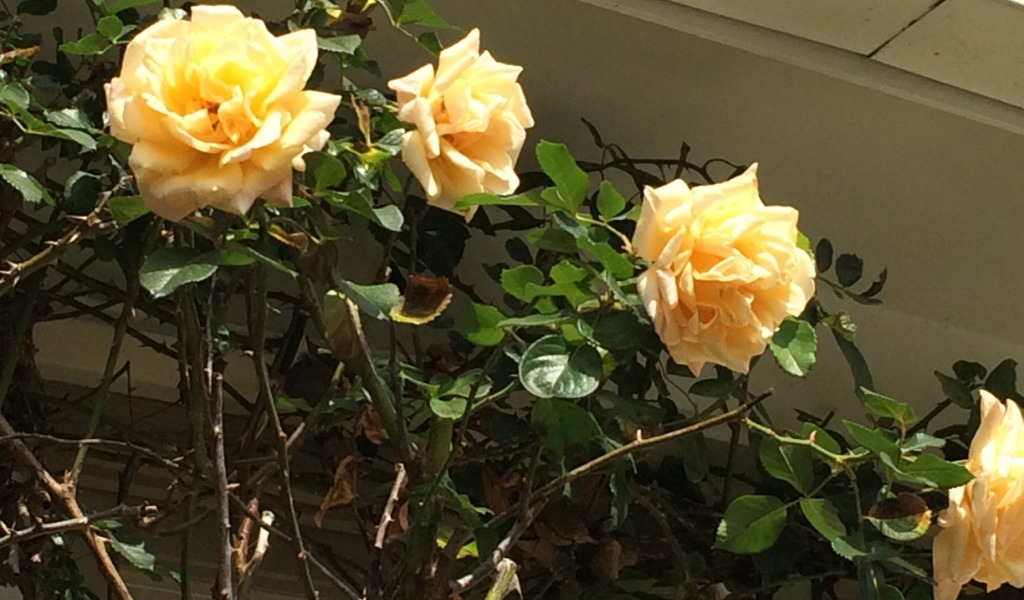With bold blooms and rich fragrances, roses are a garden staple for good reason. They are vibrant and versatile, adding color to landscapes as shrubs, ground cover and by climbing up trellises. Yet, despite their beauty, these temperamental flowers can be a bit of challenge to grow — especially in the Texas heat. That’s why we’ve prepared a short and sweet beginner’s guide for growing roses, including some of our favorite varieties.
Rose Categories
Let’s start with the basics. There are numerous varieties of roses — more on that later — but there are three main categories: Old Garden, Wild and Modern Garden Roses.
- Old Garden Roses: Also referred to as “antique” and “historic,” these classic roses existed before 1867 — the year the first Hybrid Tea Rose was created. This category includes Damask, Alba Rambler and Noisette. These flowers tend to be more fragrant, have fuller blooms and are extra hardy and disease resistant.
- Wild Roses: These roses have a distinct look characterized by a single bloom with a simple five-petal flower — unlike the tightly furled blooms on both Garden roses. This category is considered a type of wildflower and is sometimes referred to as a “species rose” because they spring up from nature.
- Modern Garden Roses: As you may have guessed, this category refers to roses that came into existence after 1867 when crossbreeding and hybridization was introduced. Modern roses include the Hybrid Tea, Climbing, Grandiflora and English Roses. While these roses are not quite as fragrant as their counterparts, they are by far the most popular roses of the day. About 80% of all roses grown today fall under this category.
Planting Season
It’s important to pay attention to the season when it comes to planting roses. The best times of the year are in the spring or in the fall before the temperatures begin to drop. If you’re planting in the spring, you’ll want to wait until after the last frost of the season to make sure new plants aren’t damaged by the chilly temperatures. Similarly, if you’re planting in the fall, you want to make sure your roses have enough time to acclimate before winter.
Irrigation
In general, roses need a lot of water to stay healthy, especially in hotter climates, though the specific amount may vary depending on the climate and soil type. For example, sandier soil requires more water than clay-rich soil. It’s also important to be sure to water the soil itself, rather than wetting the plants leaves to avoid encouraging rot or damage.
Fertilizer
Roses need high-quality, nutrient-rich fertilizer to stay healthy. When treating newly planted rose bushes, its recommended to wait until the first bloom to use full-strength fertilizers to protect new growth. When roses are in full bloom, it’s recommended to fertilize them every two weeks to keep them vibrant.
Pruning
Pruning your roses bushes is important for keeping them healthy and encouraging new growth. The spring is a great time of year to focus on pruning, along with “deadheading” or removing dead wood and weak growth. Be sure to use high-quality shears to help protect the plant and cut at a 45-degree angle. You’ll want to start by deadheading, removing any dull or dead plant matter first. This will help you clean up and shape the bush before diving into pruning.
Varieties
With so many options available, it can be overwhelming to select the right roses for your garden. Here are some of the most popular varieties for Texas gardens.
- Drift Roses: Hardy and disease-resistant, these roses come in a wide variety of colors and are ideal for groundcover.
- Belinda’s Dream: This gorgeous pink flower was dubbed a “Texas Superstar” by Texas A&M University where it was bred by a professor in 1992. Belinda’s Dream is a very fragrant and hardy shrub rose that blooms throughout the year.
- Knockout Roses: One the most popular roses, these low-maintenance shrubs are most often seen in bright reds and pinks. Not only are they hardy and disease resistant, but they don’t require deadheading.
Have more questions about growing roses? Reach out to us at Prewett, Read & Associates. Our team is here to help. From maintenance and irrigation systems to custom design-build projects, our landscape architects are on hand to keep bringing life to design.


